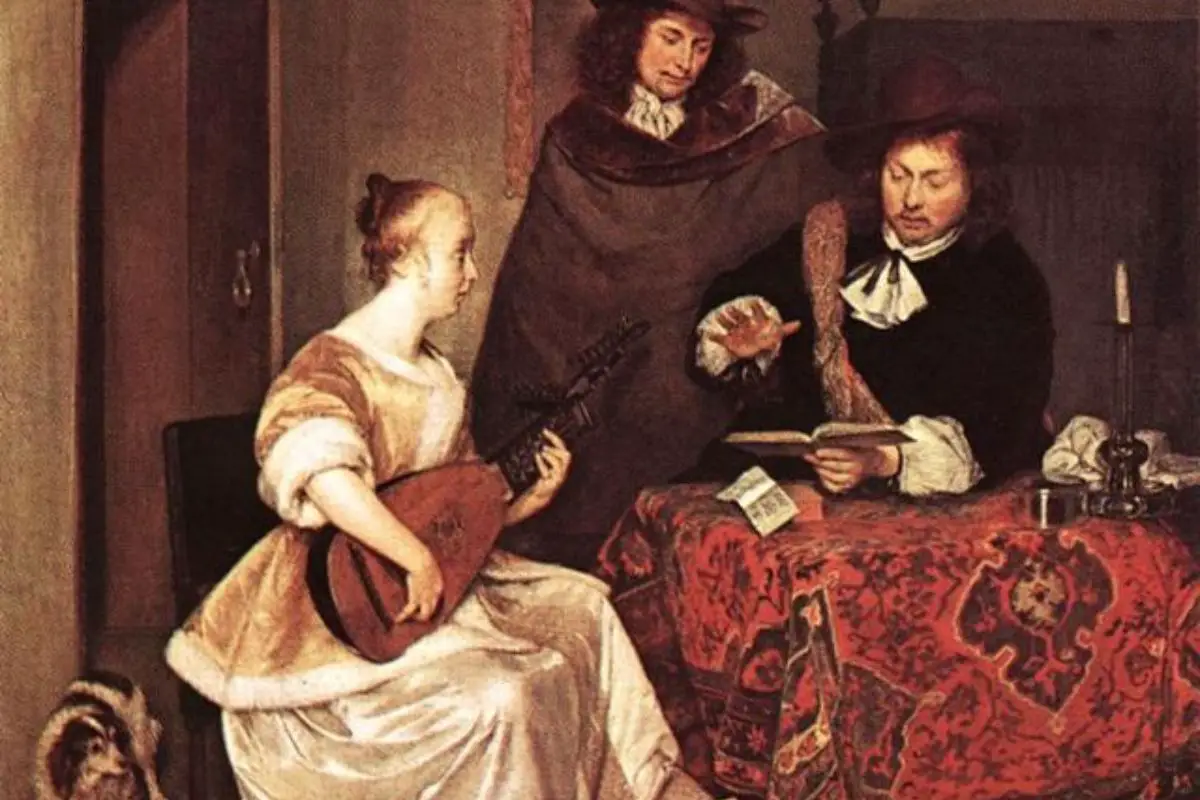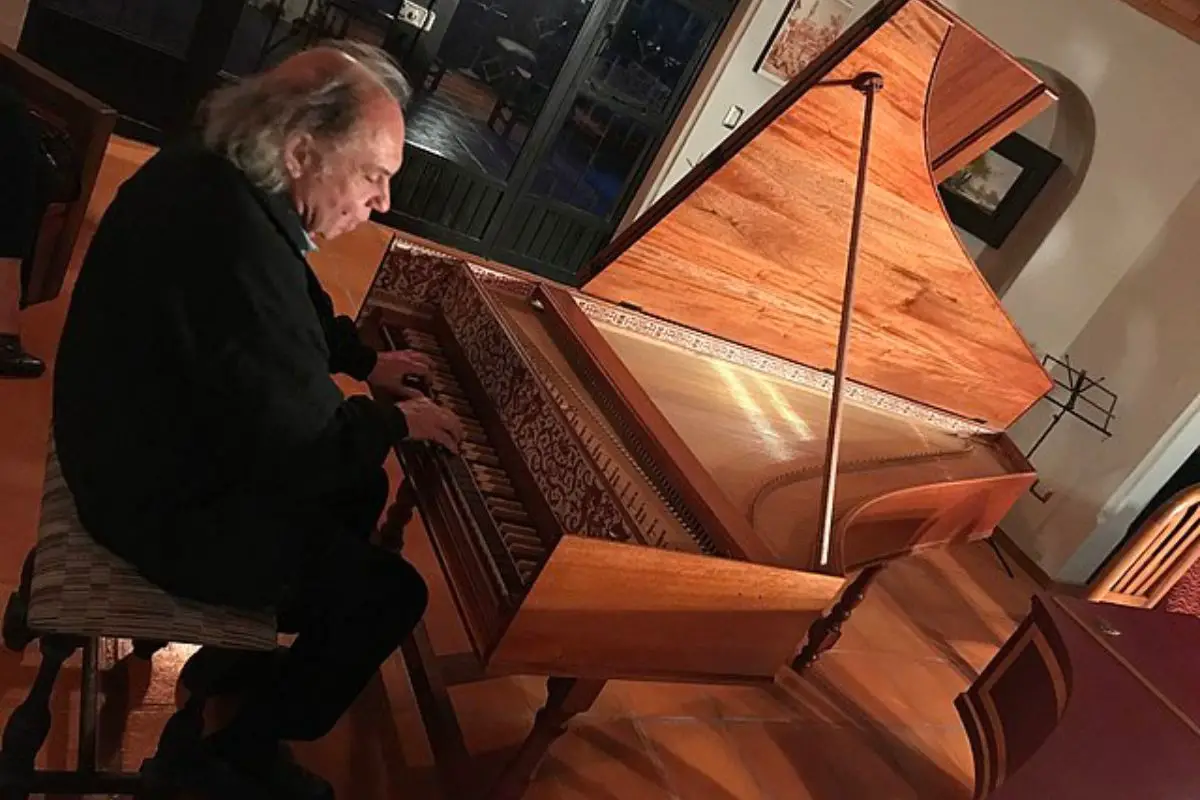Ever wondered what makes a madrigal so enchanting? Prepare to be captivated by the intricate harmonies and compelling themes of this unique musical form—journey with me as we unravel the secrets behind the fascinating world of madrigals.
What is a madrigal? A madrigal is a piece of music sung by multiple voices in polyphonic harmony, often exploring secular themes such as love. Its evolution throughout history has showcased ever-increasing complexity and artistic expression.
What is a madrigal?
A madrigal is a type of musical composition intended to be sung by two to six voices in polyphonic harmony, creating a rich and layered sound. These compositions range widely in style and content, with love being a popular theme, especially in later 17th-century madrigals. Chamber choirs often perform madrigals at special events, and they can also be heard at Renaissance fairs and other celebrations of European culture from the Renaissance era.

The earliest examples of madrigals can be traced back to the 14th century in Italy. As the madrigal form spread across Europe, it underwent significant transformations, becoming more complex and stylized. Gradually, madrigals evolved into formal and captivating compositions, often possessing a haunting quality despite their secular themes. While many associate madrigals with the Renaissance period, their popularity endured until the 1800s.
The key characteristics of madrigals:
| Characteristic | Description |
|---|---|
| Origin | Italy |
| Vocal Ensemble | Typically performed by small groups of singers |
| Textual Content | Primarily secular, often love poems or pastoral themes |
| Polyphonic Texture | A musical representation of the meaning of words through specific musical gestures and effects |
| Expressive Dissonance | Deliberate use of dissonant chords to evoke emotional intensity |
| Chromaticism | Frequent use of chromatic (half-step) harmonies and melodic passages |
| Through-Composed Structure | Continuous development of music, with each section having its own unique musical material |
| Musica Transalpina | Influenced by the English madrigal style and imported into England during the late 16th century |
It’s fascinating to witness how the madrigal evolved over time, becoming an art form that engaged multiple voices in intricate harmony. The enchanting allure of madrigals has stood the test of time, and they continue to captivate audiences to this day.
Below are some dos and don’t when exploring madrigals.
| Dos | Don’ts |
|---|---|
| Embrace the freedom to experiment | Feel confined by strict musical conventions |
| Explore complex harmonies and interplay | Neglect the importance of vocal precision |
| Appreciate the historical significance | Dismiss madrigals as outdated or irrelevant |
| Study the works of influential composers | Overlook the emotional depth of the lyrics |
| Seek inspiration from different madrigal eras | Limit yourself to one specific style or period |
AKAI Professional MPK Mini MK3

AKAI Professional MPK Mini MK3
Who are the notable composers of madrigals?
There were several notable composers who contributed significantly to the development and popularity of madrigals. Here are some of the most renowned composers of madrigals:
- Claudio Monteverdi: Monteverdi is considered one of the pioneers of the madrigal form. His madrigals, particularly those from his collection “Il primo libro de madrigali” (The First Book of Madrigals) and “Il quinto libro de madrigali” (The Fifth Book of Madrigals), showcase his innovative style and expressive use of music to convey emotions.
- Carlo Gesualdo: Gesualdo is known for his highly chromatic and emotionally intense madrigals. His compositions, such as those found in his collection “Madrigali libro 6” (Book 6 of Madrigals), pushed the boundaries of tonality and exhibited a daring harmonic language.
- Luca Marenzio: Marenzio was a prominent Italian composer of madrigals during the late Renaissance. His works, such as those in his collection “Il primo libro di madrigali a cinque voci” (The First Book of Madrigals for Five Voices), are characterized by elegant melodies, rich harmonies, and vivid word painting.
- Giovanni Pierluigi da Palestrina: While Palestrina is primarily known for his sacred music, he also composed a significant number of madrigals. His madrigals, like those in his collection “Madrigali a quattro voci” (Madrigals for Four Voices), exemplify his mastery of counterpoint, clear and balanced textures, and refined craftsmanship.
- Thomas Morley: Morley was an English composer who made significant contributions to the English madrigal tradition. His madrigals, such as those in his collection “The Triumphs of Oriana,” display lively rhythms, melodic charm, and a skillful blend of voices.
These composers, among others, played vital roles in the development and advancement of the madrigal genre. Their compositions continue to be celebrated and studied today.

What are the challenges of singing madrigals, and how to overcome them?
Singing madrigals can present several challenges for performers. Here are some of the common difficulties encountered when singing madrigals:
- Polyphonic complexity: Madrigals often feature intricate polyphonic textures with multiple melodic lines interweaving. Coordinating and blending these individual lines while maintaining precise pitch and rhythm can be challenging, requiring careful attention to detail and good ensemble skills.
- Vocal agility: Madrigals frequently include rapid melodic passages, ornamentation, and intricate vocal lines. Singers must possess agility and flexibility in their voices to navigate these demanding passages accurately and expressively.
- Word stress and articulation: Madrigals often emphasize word painting, where the music reflects the meaning and emotion of the text. Singers must pay close attention to articulation, phrasing, and stress of individual words to effectively convey the intended musical and textual expression.
- Dynamic expression: Madrigals require performers to convey a wide range of dynamics and expressiveness. Singers must be able to control their vocal volume, blend and balance with other voices, and accurately interpret the emotional nuances within the music.
- Intonation and tuning: With the use of complex harmonies and frequent chromaticism, maintaining accurate intonation can be challenging in madrigals. Singers must carefully listen to their own voices and adjust their pitch to ensure precise tuning, especially in dissonant passages.
- Language and diction: Madrigals are often composed in different languages, such as Italian or English, and may require singers to have a good understanding of pronunciation and diction. Proper enunciation and clarity of the text are essential for effective communication of the lyrics.
- Ensemble coordination: Madrigals are typically performed by small vocal ensembles, and singers must work closely together to achieve precise timing, phrasing, and dynamics. Good ensemble coordination, sensitivity to other voices, and active listening skills are crucial for a cohesive and balanced performance.
These challenges require singers to have technical proficiency, musical sensitivity, and a deep understanding of the style and context of madrigal singing. With practice, attention to detail, and a collaborative approach, singers can overcome these challenges and bring out the beauty and expressiveness of madrigal music.
What are the Advantages and disadvantages of exploring madrigals?
Madrigals offer a unique and inspiring musical experience, but it’s important to consider both the advantages and disadvantages when exploring this genre in music production or home studio recording.
Advantages
Madrigals present several advantages for musicians and producers:
- Rich Harmonies: Madrigals provide a wealth of inspiration for creating rich and layered vocal harmonies.
- Vocal skill development: Studying and performing madrigals can enhance vocal skills, including precision, blend, and expressive delivery.
- Innovative techniques: Madrigals offer opportunities to experiment with complex arrangements, vocal interplay, and expressive interpretation.
Disadvantages
However, there are a few potential challenges to be aware of:
- Complexity: Madrigals can be intricate and challenging to perform, requiring meticulous attention to detail and coordination among multiple voices.
- Technical demands: Achieving a professional-level recording of madrigals can be demanding, requiring careful mic placement, acoustic considerations, and mixed engineering techniques.
- Niche appeal: While madrigals have a dedicated following, their historical nature and specific vocal requirements may limit their mainstream appeal in contemporary music production.
Exploring madrigals can be a rewarding artistic pursuit, enabling musicians and producers to unlock new realms of creativity and vocal expression. However, it’s essential to be mindful of the technical challenges and niche nature of this genre in the context of modern music production.
If you want even more great tips and information, check out the video.
Frequently Asked Questions (FAQ)
Here are answers to some commonly asked questions about madrigals:
What makes a madrigal different from other musical forms?
Madrigals stand out for their unique characteristics, including their secular nature, freedom from strict rhyming schemes or meters, and the emphasis on intricate vocal harmonies. These elements distinguish madrigals from other musical forms and allow for artistic innovation and expression.
Can madrigals be performed by a single vocalist?
Traditionally, madrigals were composed of multiple voices, typically two to six voices in polyphonic harmony. While it is possible for a single vocalist to perform a simplified arrangement of a madrigal, the true essence of this musical form lies in the interplay and blending of voices.
Are madrigals still relevant in contemporary music?
While madrigals originated during the Renaissance period, they continue to captivate audiences and inspire musicians today. Their intricate harmonies, expressive lyrics, and historical significance make madrigals an enduring art form that can be appreciated and explored in modern music production.
Conclusion
In the melodious world of madrigals, harmony intertwines with history, bringing forth captivating compositions that transcend time. Whether you’re a music enthusiast, a producer, or a curious learner, the enchantment of madrigals awaits you. So, embark on this harmonious journey and let the voices of the past guide your creative endeavors.
Remember, I read and reply to every comment, so don’t hesitate to share your thoughts and questions in the comments section below. Thanks for reading, and may your musical endeavors be filled with enchanting melodies and harmonious joy.
Key Takeaways
This article covered the fascinating world of madrigals, exploring their origins, notable composers, challenges, and rewards of singing them, and their relevance in music production. Here are some key takeaways:
- Madrigals are polyphonic vocal compositions that originated during the Renaissance period.
- England has been notable for its contributions to the madrigal tradition, with composers like Thomas Morley and Orlando Gibbons.
- Singing madrigals requires precision, coordination, and interpretive skills, offering rewarding experiences for performers.
- Madrigals inspire modern music production, offering rich harmonies, vocal techniques, and innovative arrangements.















